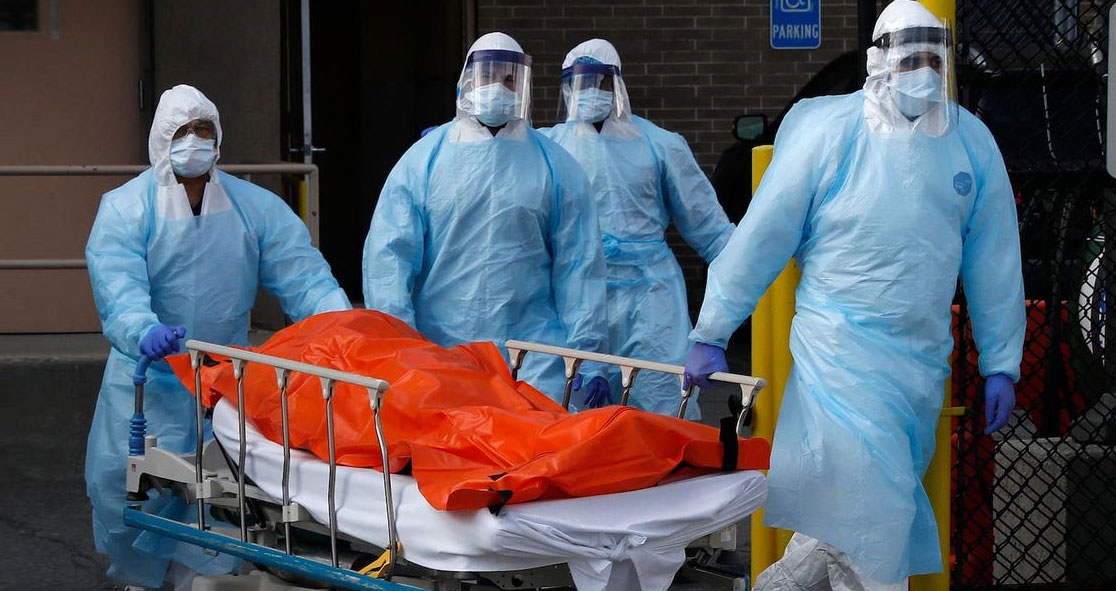In the United States, SARS-CoV-2, the virus that causes COVID-19, has now killed more than 820,000 people, according to NPR. And the nation is facing the ongoing Omicron threat.
Immunologist and epidemiologist Dr. Helen Chu at the University of Washington said, “It’s tragic on so many levels.”
Dr. Chu and her team first identified the case of community spread of COVID-19 in Seattle, as they pivoted from testing nasal swabs for influenza to test for the coronavirus. They were the first to raise the alarm about COVID’s presence, despite political and bureaucratic hurdles.
Surges in new cases have been fueled by highly transmissible variants of the coronavirus. The nation hit the tragic new record Tuesday, after surpassing 50 million COVID-19 cases.
Epidemiologist Dr. Michael Osterholm, who is the director of the Center for Infectious Disease Research, has accurately predicted a few harrowing effects of the pandemic. However, he said even he is surprised by the impact of the new variants.
He said, “I had a sense [in early 2020] that this was going to be a prolonged and very damaging pandemic. What I didn’t understand at the time, and has surely influenced how I think it’s going to keep going, is the role the variants played. I think the variant issue right now continues to be the 210-mile-an-hour curveball that we don’t really yet understand completely.”
Experts have recently been warning that the highly transmissible Omicron variant, which was first identified in southern Africa, could bring a new spike. And so far, reports of vaccines’ efficacy against Omicron are mixed.
Dr. Chu said, “Certainly the data is concerning about the decreased effectiveness of two vaccine doses against omicron, but booster doses seem to overcome that to a degree. And as with all the other surges, it will be the unvaccinated who will become seriously ill, hospitalized, and fill the hospitals past capacity.”
Dr. Osterholm said the health care system is constantly urging people to get vaccinated.
He said, “In many places right now in these states with these prolonged surges, we are beyond bending. We’re broken, in some of these institutions. If the variants are 210-mile-an-hour curveballs, omicron is about a 500-mile-an-hour curveball.”
Dr. Osterholm explained that Omicron could cause less severe illness but due to high transmission rates, many patients may need to go to hospitals.
He said, “I think that over the course of the next three to four weeks, we’re going to see a real impact from Omicron. The question is what will that impact be? And we just don’t know yet.”
Dr. Chu and Dr. Osterholm believe more COVID-19 strains will emerge in the future.
“It’s embarrassing for the country that led on so much of the science around immunology, virology, and vaccinology, to have stumbled in vaccine implementation and rollout to its population,” Dr. Chu said. “And it’s just really terrible to think that so many of those deaths were completely preventable.”
Unfortunately, COVID-19 has killed more Americans in 2021 than in 2020 despite the arrival of the vaccines.
However, Dr. Osterholm said the median age of COVID-19 deaths among older adults has “dropped precipitously,” considering the nation’s vaccination status.
He said, “One of the things that I find troubling is the fact that people often write off [the death toll] as just, ‘This is a bunch of old people.’”
Many epidemiologists say we need to learn how to adapt to COVID-19, expressing their concerns over the difficulties of eradicating the disease completely.
Dr. Chu said, “I think we are going to have to get to a point of learning how to coexist with this virus.”
“There is a very large focus on vaccines, but continued masking and testing needs to be emphasized to prevent community spread,” she added. “I would like to see a universal vaccine and mask mandate, and easy and cheap testing to be available. That is what has worked in other countries, and we should be doing that here.”
Dr. Osterholm said, “Pandemics are going to happen. They’re like tornadoes, hurricanes, and earthquakes. What we’re going to need to do is be able to respond to them, so that we minimize the damage. And that’s the key message right now, I think, is what do we do to do that?”























